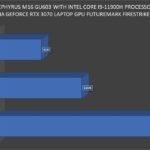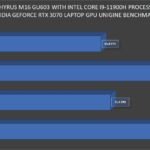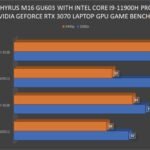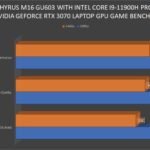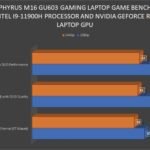ASUS ROG series of gaming laptops have never failed to impress gamers around the region. The new ROG Zephyrus M16 GU603 is one of the latest gaming laptops to roll out and we got the chance to try it out for a few weeks.
Design
 ASUS is known for creating gaming laptops that feature a slim design, displays with super-narrow bezels, and efficient cooling solutions. The Zephyrus M16 comes with a 16-inch IPS panel and is backed with a screen resolution of 2560 x 1600. And one of the main features of the screen is its refresh rate that is maxed out at 165Hz. The laptop brings support for Adaptive-Sync if you want those framerates locked. ASUS mentions that the response time of the display is 3ms. Along with the narrow bezels, ASUS mentions that the screen features a 94% screen-to-body ratio for more screen estate to view content. The viewing angles of the display do look great, thanks to the common characteristics of the IPS panel.
ASUS is known for creating gaming laptops that feature a slim design, displays with super-narrow bezels, and efficient cooling solutions. The Zephyrus M16 comes with a 16-inch IPS panel and is backed with a screen resolution of 2560 x 1600. And one of the main features of the screen is its refresh rate that is maxed out at 165Hz. The laptop brings support for Adaptive-Sync if you want those framerates locked. ASUS mentions that the response time of the display is 3ms. Along with the narrow bezels, ASUS mentions that the screen features a 94% screen-to-body ratio for more screen estate to view content. The viewing angles of the display do look great, thanks to the common characteristics of the IPS panel.
ASUS also mentions that although the display is 16-inch in size, the entire laptop is a chassis of a 15-inch model. The ROG Zephyrus M16 GU603 is also 5% lighter and smaller than its predecessor models. The dimensions of the laptop are 35.5 x 24.3 x 1.99 – 1.99 cm, and the weight of the laptop is 1.9kg. It’s impressive that ASUS managed to squeeze a 16-inch panel on a smaller chassis and keep the weight below 2kg.
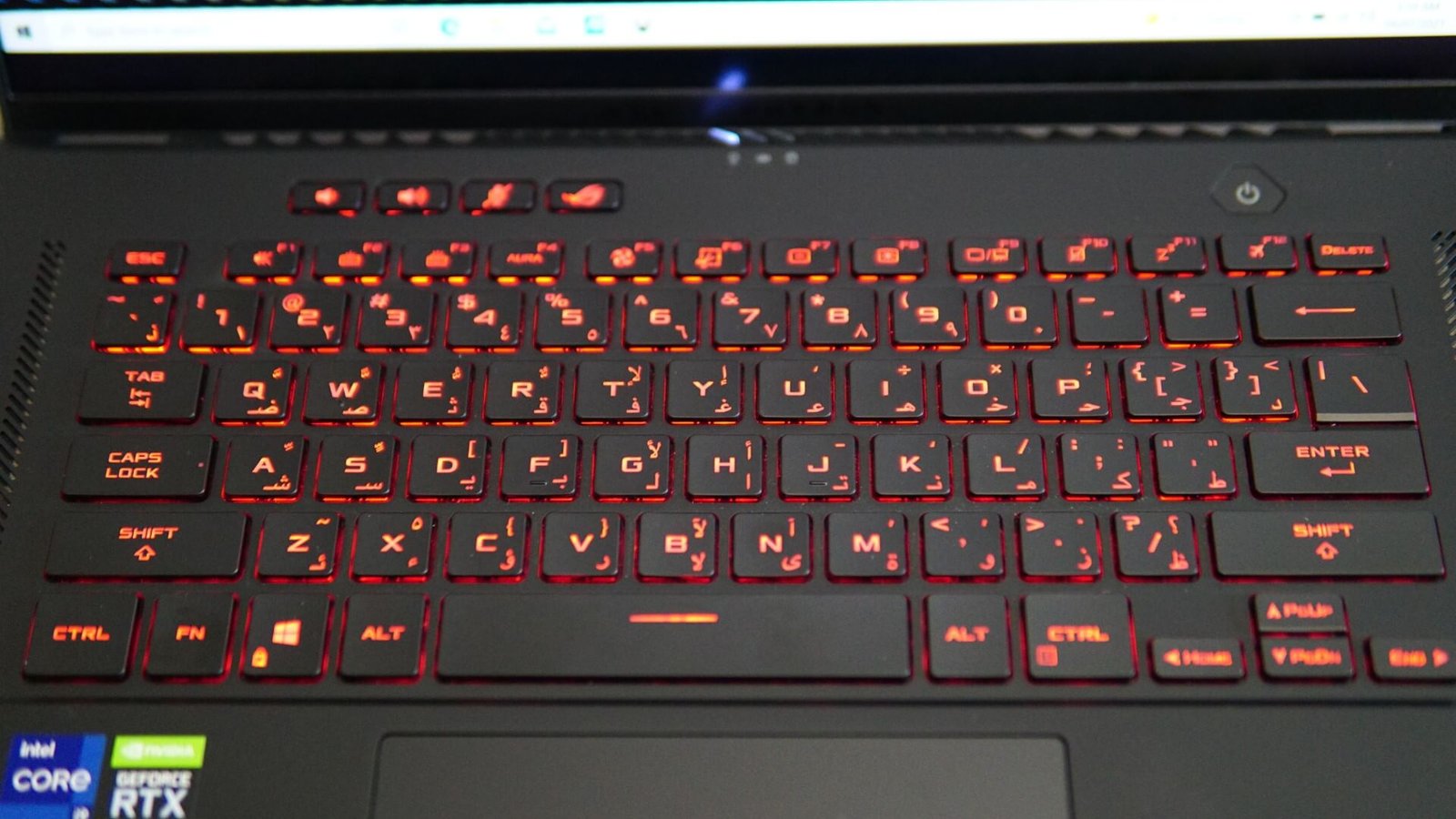 ASUS has also included a gamer-centric Stealth Type keyboard with keystrokes that are rated under 30dB. The keyboard also features the N-Key rollover that is meant to ensure all keys pressed are registered. There is also the Overstroke technology that helps to lower every key’s actuation point. The keyboard feature a travel distance of 1.7mm. The keys are also backlit with RGB colors. The new trackpad on the ROG Zephyrus M16 GU603 is 20% larger than previous models. The palm rest of the keyboard features a soft-touch paint that helps to minimize smudges and fingerprints and also makes it more comfortable for the gamer to place their hands.
ASUS has also included a gamer-centric Stealth Type keyboard with keystrokes that are rated under 30dB. The keyboard also features the N-Key rollover that is meant to ensure all keys pressed are registered. There is also the Overstroke technology that helps to lower every key’s actuation point. The keyboard feature a travel distance of 1.7mm. The keys are also backlit with RGB colors. The new trackpad on the ROG Zephyrus M16 GU603 is 20% larger than previous models. The palm rest of the keyboard features a soft-touch paint that helps to minimize smudges and fingerprints and also makes it more comfortable for the gamer to place their hands.
 The new Zephyrus M16 shares the popular ErgoLift feature that is seen on many other ASUS ultrabooks and gaming laptops. With the 180° ErgoLift, you will be able to flip the screen all the way backward. When opening the lid, the ErgoLigft elevates the keyboard portion, providing users with a better angle to type or play games.
The new Zephyrus M16 shares the popular ErgoLift feature that is seen on many other ASUS ultrabooks and gaming laptops. With the 180° ErgoLift, you will be able to flip the screen all the way backward. When opening the lid, the ErgoLigft elevates the keyboard portion, providing users with a better angle to type or play games.
 The new M16 comes with a vast number of ports and connectivity. On the left side, you get the power connector, an HDMI 2.0b, an RJ45 port, a Thunderbolt 4 port, one USB 3.2 Gen 2 Type-C port with support for DP 1.4, and a 3.5mm audio jack. The right side of the laptop has fewer ports, which includes one USB 3.2 Gen 1 port and a MicroSD card slot. With the amount of space available, we think ASUS could have used a full-sized SD card reader instead.
The new M16 comes with a vast number of ports and connectivity. On the left side, you get the power connector, an HDMI 2.0b, an RJ45 port, a Thunderbolt 4 port, one USB 3.2 Gen 2 Type-C port with support for DP 1.4, and a 3.5mm audio jack. The right side of the laptop has fewer ports, which includes one USB 3.2 Gen 1 port and a MicroSD card slot. With the amount of space available, we think ASUS could have used a full-sized SD card reader instead.
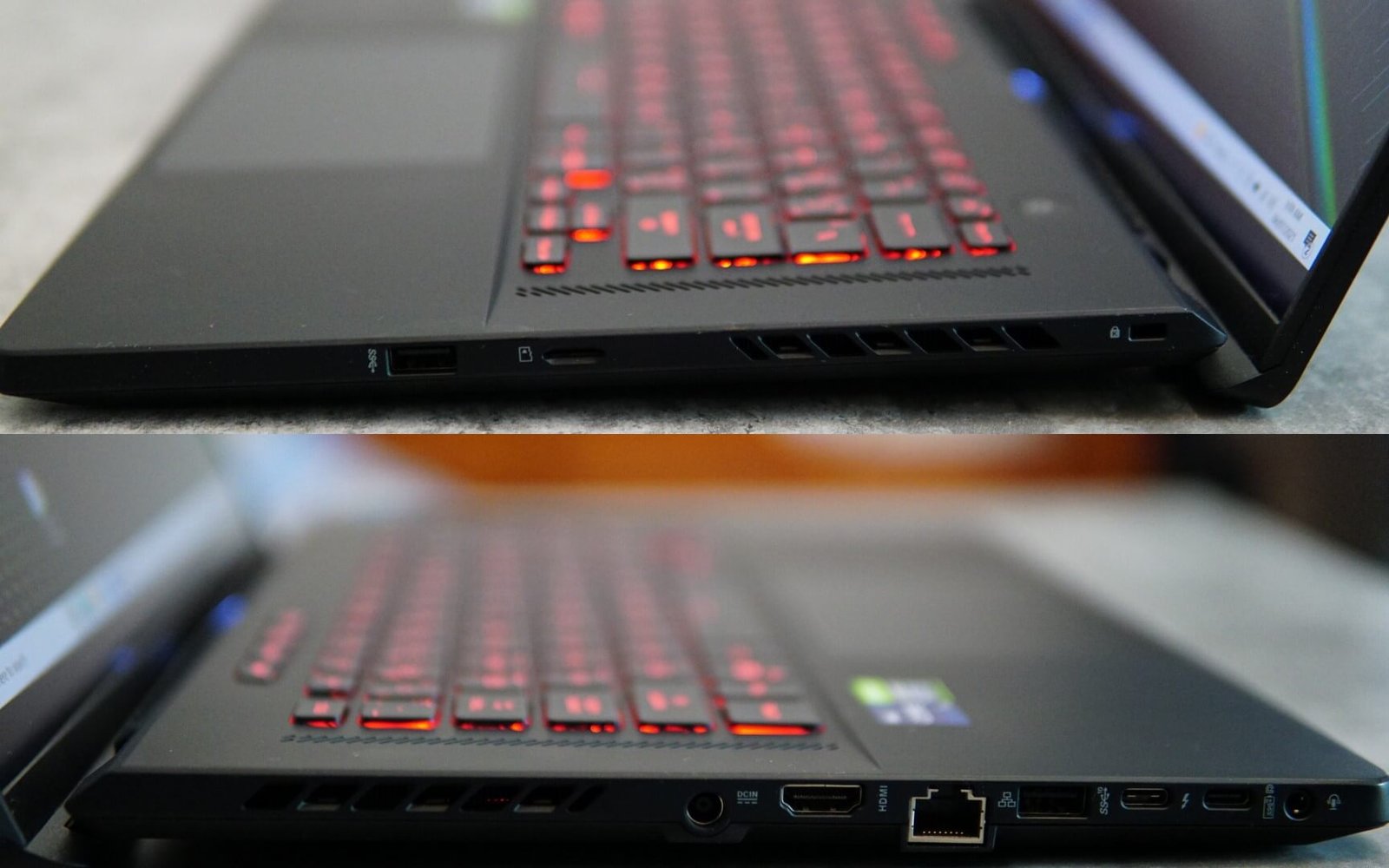 ASUS also adds more to the design of the laptop with the dot matrix design pattern on the lid. With the help of the precision CNC milling process, there are 8279 tightly spaced perforations with a prismatic film that is beneath, delivering a shimmering effect when you look from different angles. There is also the ROG Republic of Gamers insignia on the bottom left of the lid.
ASUS also adds more to the design of the laptop with the dot matrix design pattern on the lid. With the help of the precision CNC milling process, there are 8279 tightly spaced perforations with a prismatic film that is beneath, delivering a shimmering effect when you look from different angles. There is also the ROG Republic of Gamers insignia on the bottom left of the lid.
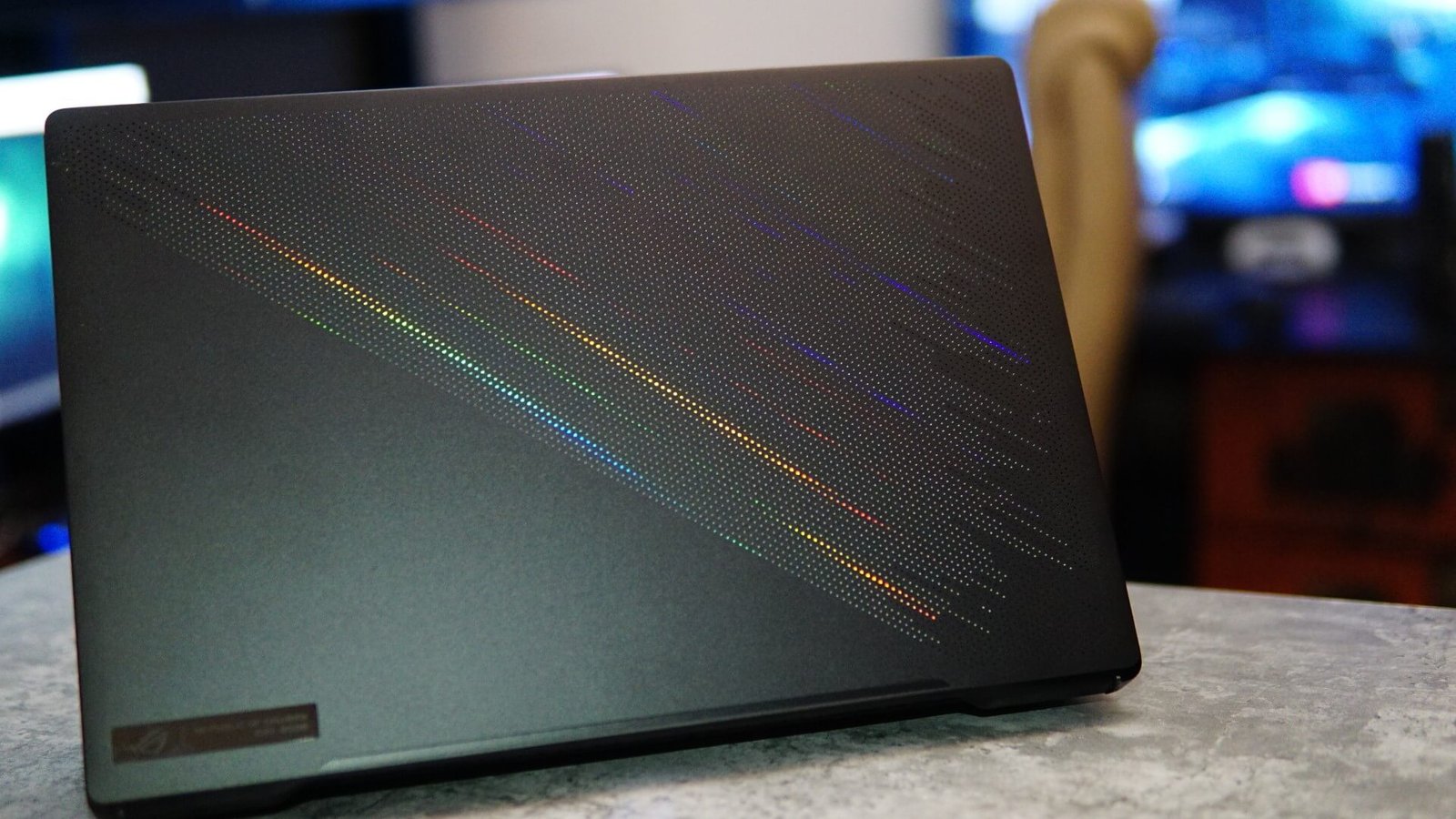 The new M16 laptop features advanced cooling solutions and enough vents to dissipate the heat. ASUS calls the setup as the ROG Intelligent Cooling. There are four exhaust air vents on the laptop, two of which are located on the rear side and the other two on the left and right sides. The vent for the intake of the air is also on the rear side on the top portion of the keyboard. While dust can enter the air intake, ASUS has included a self-cleaning cooling system (Self-Cleaning 2.0) to ensure that a dust build-up does not occur on the fan blades, heatsink fins, and other components that can affect the cooling performance.
The new M16 laptop features advanced cooling solutions and enough vents to dissipate the heat. ASUS calls the setup as the ROG Intelligent Cooling. There are four exhaust air vents on the laptop, two of which are located on the rear side and the other two on the left and right sides. The vent for the intake of the air is also on the rear side on the top portion of the keyboard. While dust can enter the air intake, ASUS has included a self-cleaning cooling system (Self-Cleaning 2.0) to ensure that a dust build-up does not occur on the fan blades, heatsink fins, and other components that can affect the cooling performance.
 The cooling system has a total of four heatsinks, each equipped with ultrathin copper fins that are only 0.15mm. And to support the heat flow, there are a total of 6 heat pipes that are connected to the CPU, the GPU, VRAM, and also the VRM circuitry, ensuring that the laptop performs well with sufficient cooling. The best part is that ASUS has included the popular Thermal Grizzly liquid metal thermal compounds atop the processor that can reduce operating temperatures than normal thermal paste solutions.
The cooling system has a total of four heatsinks, each equipped with ultrathin copper fins that are only 0.15mm. And to support the heat flow, there are a total of 6 heat pipes that are connected to the CPU, the GPU, VRAM, and also the VRM circuitry, ensuring that the laptop performs well with sufficient cooling. The best part is that ASUS has included the popular Thermal Grizzly liquid metal thermal compounds atop the processor that can reduce operating temperatures than normal thermal paste solutions.
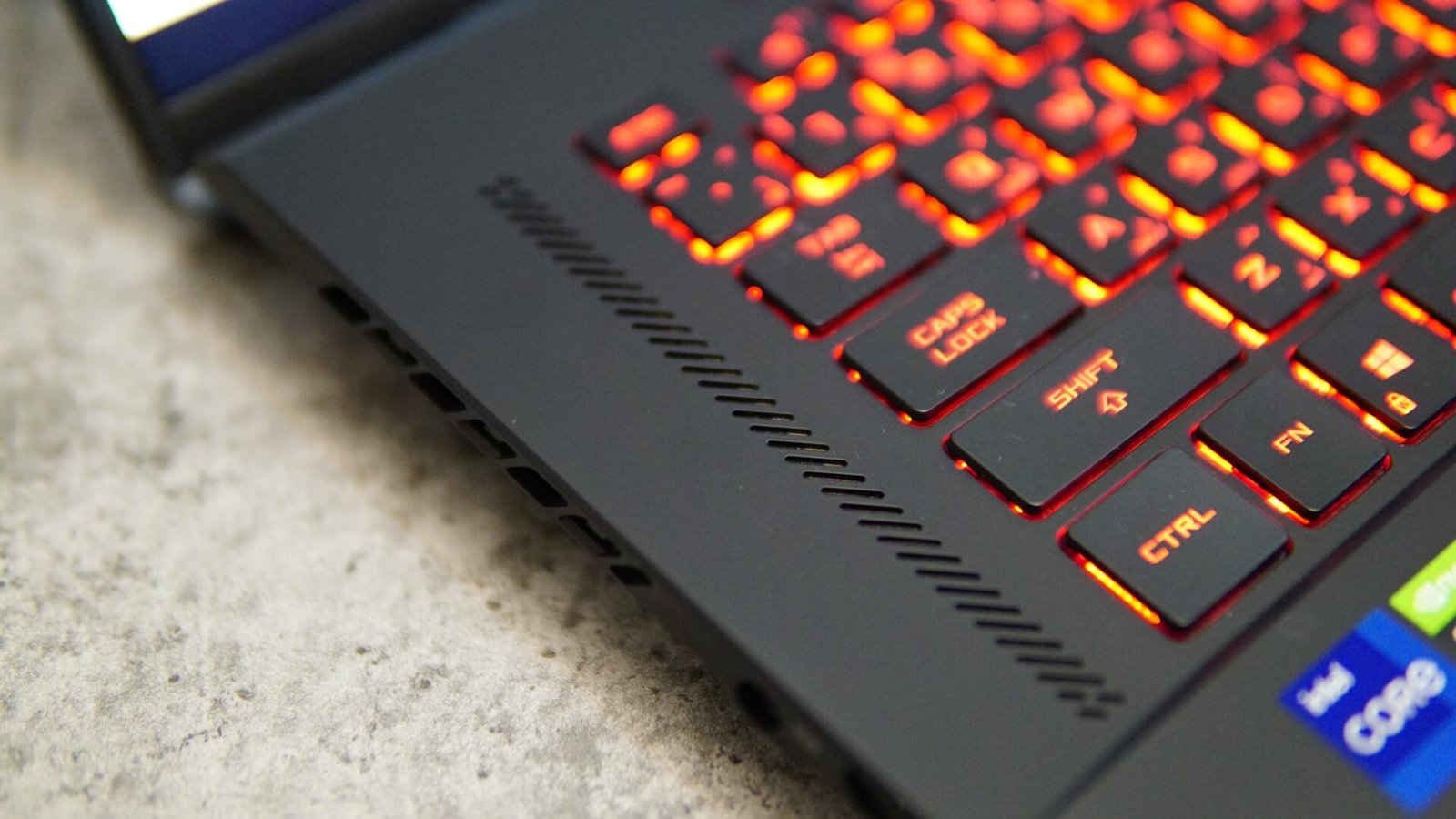 ASUS has also enhanced the audio capability of the ROG Zephyrus M16 by including four 2W Force-Cancelling woofers with Smart Amps and two 2W tweeters. The audio is also further enhanced with Dolby Atmos. Since the laptop chassis is small. the woofers are kept in pairs to cancel each other’s vibrations and minimize resonance. ASUS also includes a 3D Mic Array with AI Noise Cancellation on the front, along with a 720p HD camera.
ASUS has also enhanced the audio capability of the ROG Zephyrus M16 by including four 2W Force-Cancelling woofers with Smart Amps and two 2W tweeters. The audio is also further enhanced with Dolby Atmos. Since the laptop chassis is small. the woofers are kept in pairs to cancel each other’s vibrations and minimize resonance. ASUS also includes a 3D Mic Array with AI Noise Cancellation on the front, along with a 720p HD camera.
 The mic has three modes, one of which is called the Cardioid mode that helps to capture audio from the front side of the laptop that is ideal for streaming and gaming. There is then the Stereo mode that makes use of the left and right-sided channels for recording a wider soundscape. And the third is the Omnidirectional mode that can pick audio from all directions. The new Zephyrus M16 also houses a large 4-cell Li-ion 90WHr battery. The power adaptor brick does have its own ROG insignia which looks amazing.
The mic has three modes, one of which is called the Cardioid mode that helps to capture audio from the front side of the laptop that is ideal for streaming and gaming. There is then the Stereo mode that makes use of the left and right-sided channels for recording a wider soundscape. And the third is the Omnidirectional mode that can pick audio from all directions. The new Zephyrus M16 also houses a large 4-cell Li-ion 90WHr battery. The power adaptor brick does have its own ROG insignia which looks amazing.
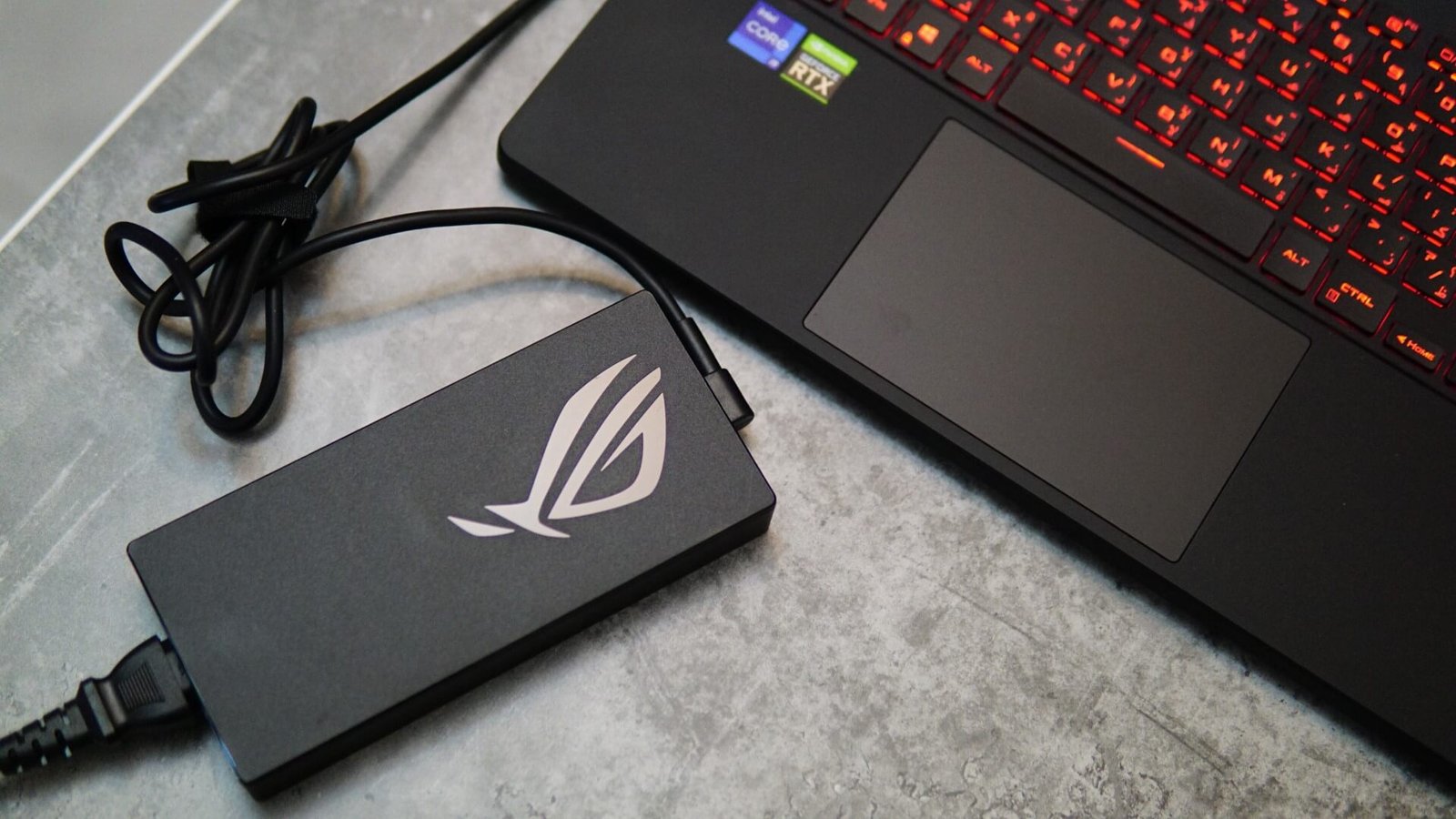 Specifications
Specifications
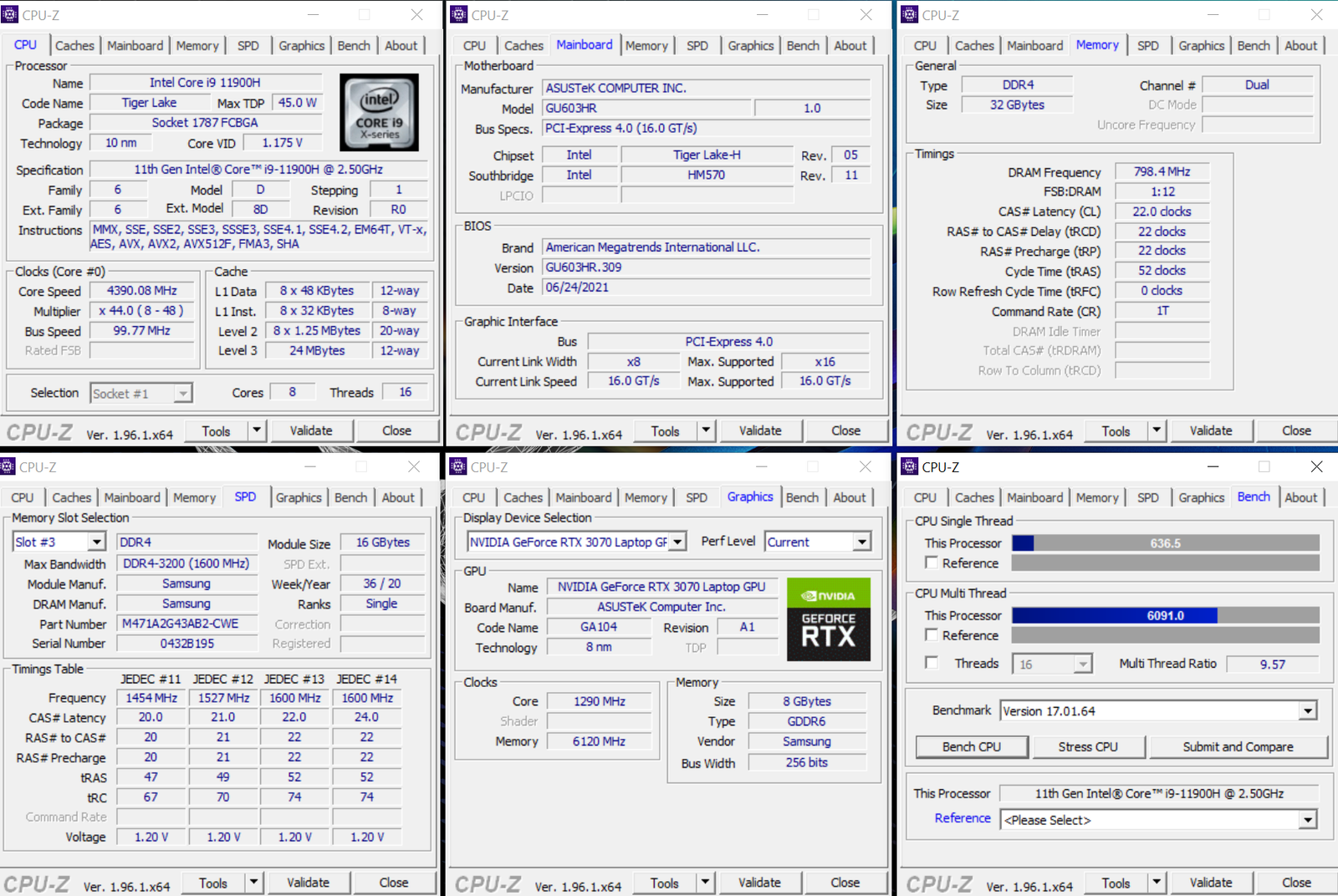 The new ROG Zephyrus M16 GU603 isn’t just about the looks and style of the laptop, it also has one of the latest hardware to deliver great gaming performance. The M16 that we got for review came with the 11th generation lntel i9-11900H 8-core processor with the base clock speeds set at 2.5 GHz and can turbo boost up to 4.9GHz speeds. And to handle 1440p gaming, ASUS uses the laptop version of the NVIDIA GeForce RTX 3070 GPU with 8GB GDDR6 memory.
The new ROG Zephyrus M16 GU603 isn’t just about the looks and style of the laptop, it also has one of the latest hardware to deliver great gaming performance. The M16 that we got for review came with the 11th generation lntel i9-11900H 8-core processor with the base clock speeds set at 2.5 GHz and can turbo boost up to 4.9GHz speeds. And to handle 1440p gaming, ASUS uses the laptop version of the NVIDIA GeForce RTX 3070 GPU with 8GB GDDR6 memory.
 ASUS mentions that the GPU comes with the ROG Boost that clocks the GPU up to 1390 MHz speeds. The chipset is supported with 16GB DDR4 RAM. The laptop also features a fast Samsung 2TB NVMe SSD (MZVL22T0HBLB-00B00) with Windows 10 Home installed. The 2TB of SSD space is sufficient to install many games.
ASUS mentions that the GPU comes with the ROG Boost that clocks the GPU up to 1390 MHz speeds. The chipset is supported with 16GB DDR4 RAM. The laptop also features a fast Samsung 2TB NVMe SSD (MZVL22T0HBLB-00B00) with Windows 10 Home installed. The 2TB of SSD space is sufficient to install many games.
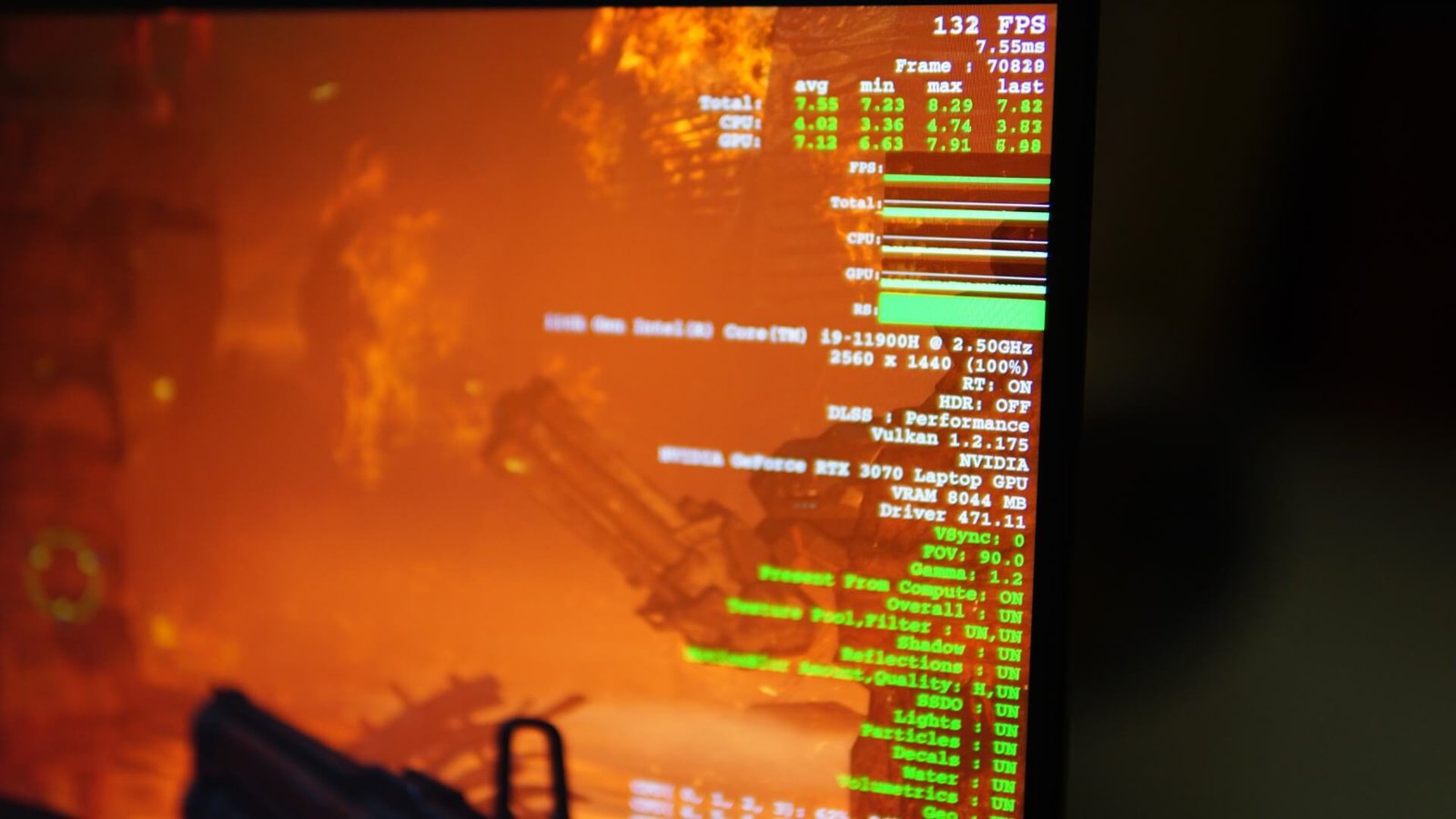 We tested the ROG Zephyrus M16 GU603 with benchmark tools such as the FireStrike, TimeSpy, Unigine Heaven, Valley, Superposition, and more for GPU tests. We used Cinebench R23, Geekbench 5 for processor tests. We tested a list of DX11, DX12, and Vulkan games with the RTX 3070, and since the GPU is capable of ray tracing, we also did a series of RT gaming benchmarks with and without DLSS enabled. All the gaming benchmarks are done in FHD and QHD resolutions. We also used Crystaldiskmark to test the SSD performance. For all the benchmarks, we used the Turbofan mode to ensure sufficient cooling of the system.
We tested the ROG Zephyrus M16 GU603 with benchmark tools such as the FireStrike, TimeSpy, Unigine Heaven, Valley, Superposition, and more for GPU tests. We used Cinebench R23, Geekbench 5 for processor tests. We tested a list of DX11, DX12, and Vulkan games with the RTX 3070, and since the GPU is capable of ray tracing, we also did a series of RT gaming benchmarks with and without DLSS enabled. All the gaming benchmarks are done in FHD and QHD resolutions. We also used Crystaldiskmark to test the SSD performance. For all the benchmarks, we used the Turbofan mode to ensure sufficient cooling of the system.
Cinebench benchmark
 Geekbench benchmark
Geekbench benchmark
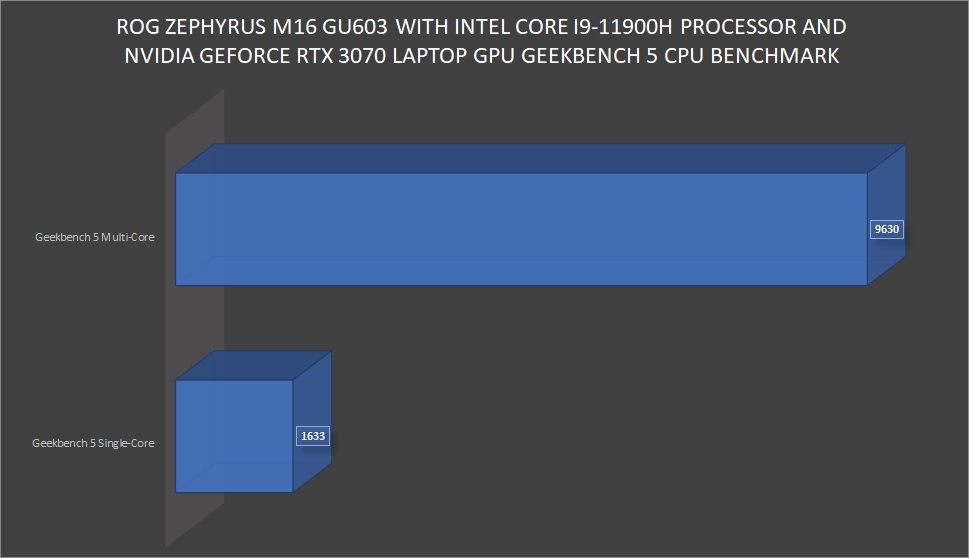
 CrystalDiskMark
CrystalDiskMark
Futuremark benchmarks
Unigine benchmarks
Game benchmarks
While the benchmarks from FireStrike, TimeSpy, Cinebench, Unigine, Geekbench, and other synthetical benchmarks are self-explanatory, we can take a look at the game benchmarks. While we tested the games at FHD and QHD resolutions, not all of them were tested at their maximum settings. In our Rise of the Tomb Raider benchmark at full settings, we got 88fps at 1440p resolution and 115fps at FHD resolution with DX12 mode. With Shadow of the Tomb Raider at full settings, we got 53fps at 1440p and 77fps at 1080p resolution (DX12). And with using DLSS, the framerates improve with an average of 78fps on 1440p resolution and 96fps at FHD resolution. With DOOM Eternal, we amped the settings to the maximum with Vulkan API and achieved an average of 170fps at FHD and 132fps at QHD resolution. With DLSS Quality mode, the performances increases and we reached 142fps at QHD and 177fps at FHD resolution.
We also tested games such as Metro Exodus at Extreme settings and got an average of 54fps at QHD and 67fps at FHD resolution. Crysis 3 and Far Cry were also tested at maximum settings. We also tested one of the most modern demanding games such as Cyberpunk 2077. We had to tune down the graphical settings to medium presets and achieved an average of 31fps at QHD and 55fps at FHD resolution. This further improves when we use DLSS Quality and got an average of 54fps at QHD and 82fps at FHD. The DLSS Performance mode takes it further ahead with an average of 72fps at QHD and 93fps at FHD resolution.
Game benchmarks with RT
We then tried some of the games that come with ray-tracing. First was Metro Exodus Enhanced Edition where we used the RT benchmark mode and got an average of 26fps with QHD resolution and 37fps with FHD resolution. When we selected DLSS Quality, the performance improved with the average framerate reaching 43fps at QHD resolution and 56fps at FHD resolution. Next is Shadow of the Tomb Raider, where we got an average of 34fps at QHD resolution and 52fps at FHD resolution. With DLSS mode, the performance increases to 55fps at QHD and 74fps average at FHD resolution. Then comes DOOM: Eternal where we got an average of 59fps at QHD and 65fps at FHD resolution with RT maxed out. With enabling DLSS Quality, we got an average of 75fps at FHD and 61fps at QHD.
We then tested Cyberpunk 2077, which quite frankly, is a really demanding game with ray tracing enabled. We once again use the medium presets and got an average of 15fps at QHD and 28fps at FHD resolution. With DLSS Performance mode, we were able to achieve an average of 42fps at QHD and 61fps at FHD resolution. We could achieve a little more with the help of DLSS Ultra Performance mode. It’s a bit of a shame that we need a GPU more powerful than the RTX 3070 laptop version to achieve framerates that match the refresh rate and it’s quite hard to reach 165fps gameplay. And we would require to make compromises such as reducing the graphical settings and even the screen resolution, but this applies only to certain games.
Verdict
If you’re looking for a good gaming laptop that should be able to handle most of the games and if a fast display is among the features you want, then the new ASUS ROG Zephyrus M16 GU603 is a good choice to consider. The new Zephyrus M16 comes with a 16-inch QHD IPS display with a refresh rate of 165Hz. The chassis of the new laptop is smaller than previous models, along with a slim-profile keyboard and a large trackpad. The palm rest of the keyboard also comes with a soft-touch coating for a comfortable gaming experience. The laptop also comes with the ErgoLift mechanism that allows the display to go backward and also elevating the keyboard area.
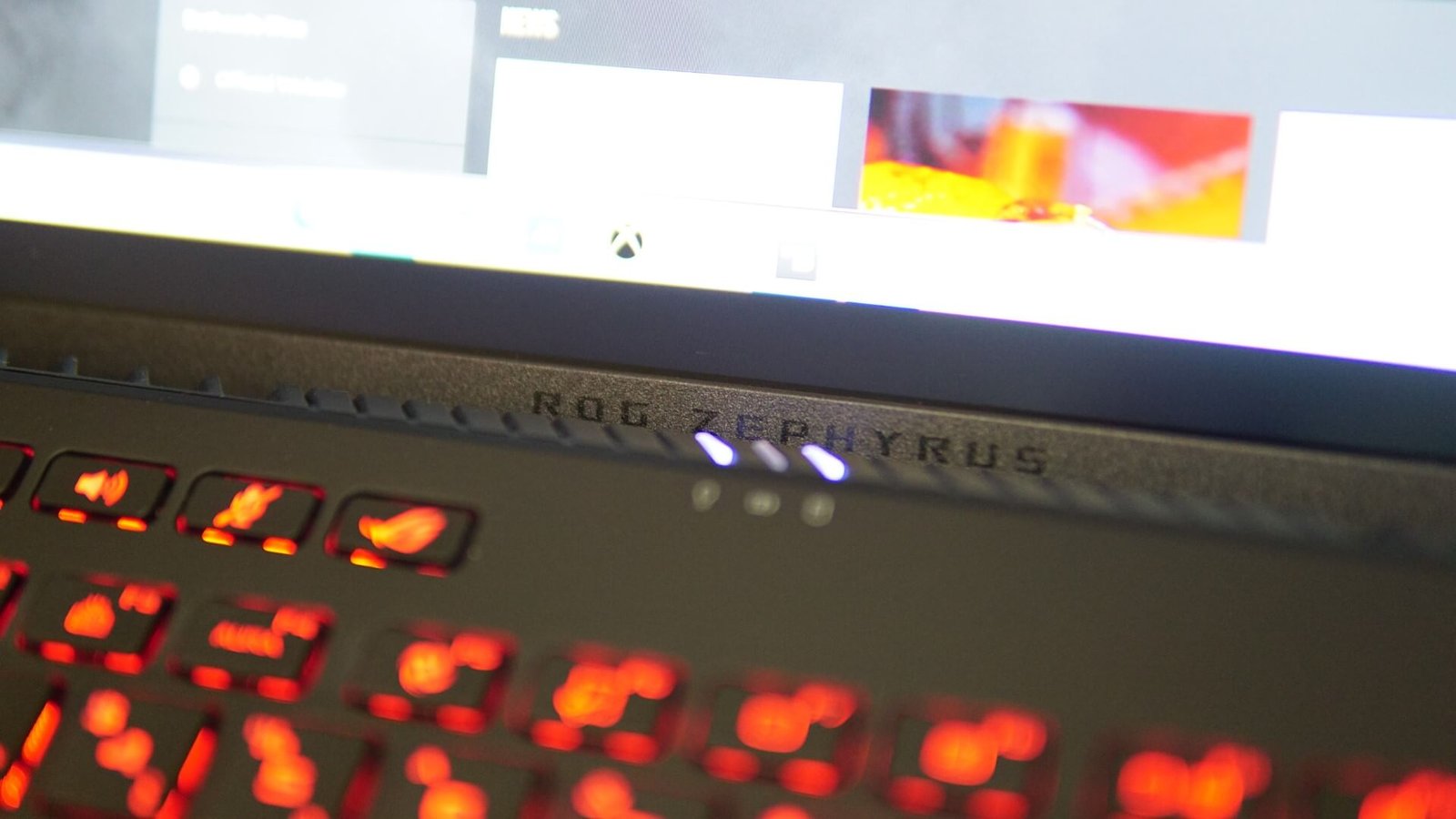 The dot-matrix pattern adds up for the looks of the keyboard. And the laptop does feature an advanced cooling system with enough vents for the airflow. The Zephyrus M16 comes with a total of six speakers onboard, which includes woofers and tweeters. The onboard 3D Mic Array with AI noise cancellation has three modes of operation to capture audio. The Zephyrus M16 comes armed with the lntel i9-11900H processor and the NVIDIA GeForce RTX 3070 Laptop GPU, sufficient to handle FHD gaming and also decent framerates at QHD resolution. Ray-tracing performance is decent and it gets better with DLSS enabled. The hardware is also good enough for video editing jobs. The laptop also has a spacious 2TB NVMe SSD to store your games, movie library, and more.
The dot-matrix pattern adds up for the looks of the keyboard. And the laptop does feature an advanced cooling system with enough vents for the airflow. The Zephyrus M16 comes with a total of six speakers onboard, which includes woofers and tweeters. The onboard 3D Mic Array with AI noise cancellation has three modes of operation to capture audio. The Zephyrus M16 comes armed with the lntel i9-11900H processor and the NVIDIA GeForce RTX 3070 Laptop GPU, sufficient to handle FHD gaming and also decent framerates at QHD resolution. Ray-tracing performance is decent and it gets better with DLSS enabled. The hardware is also good enough for video editing jobs. The laptop also has a spacious 2TB NVMe SSD to store your games, movie library, and more.
The ASUS ROG Zephyrus M16 GU603 is now available in the UAE with a price starting at 7999 AED. Click here to buy.







